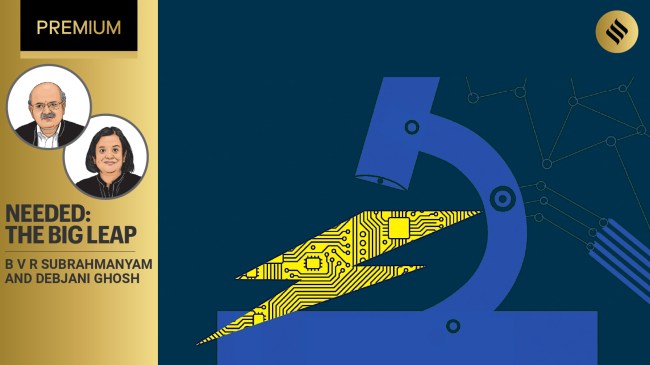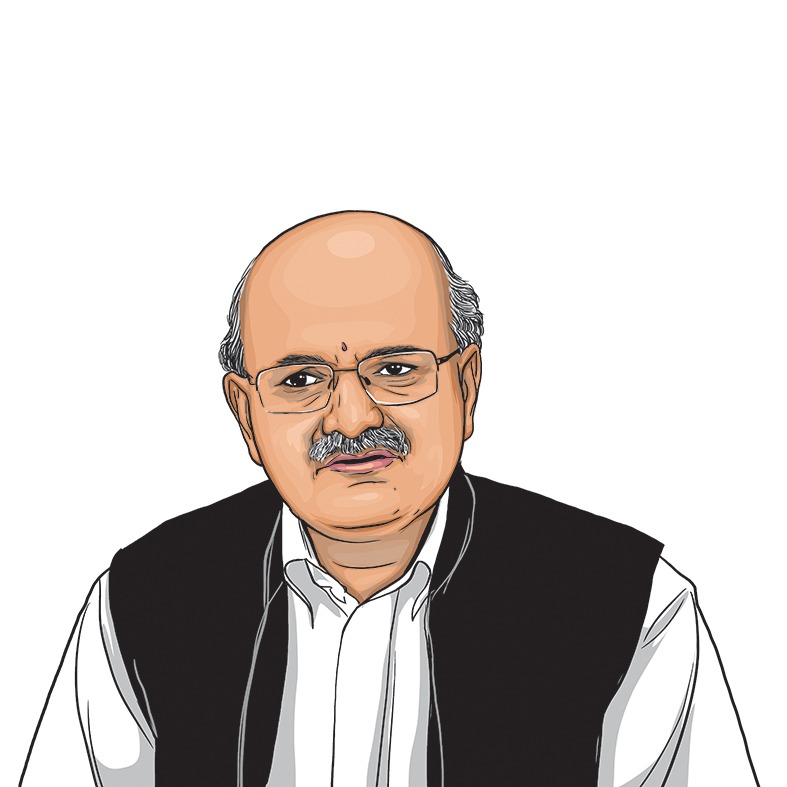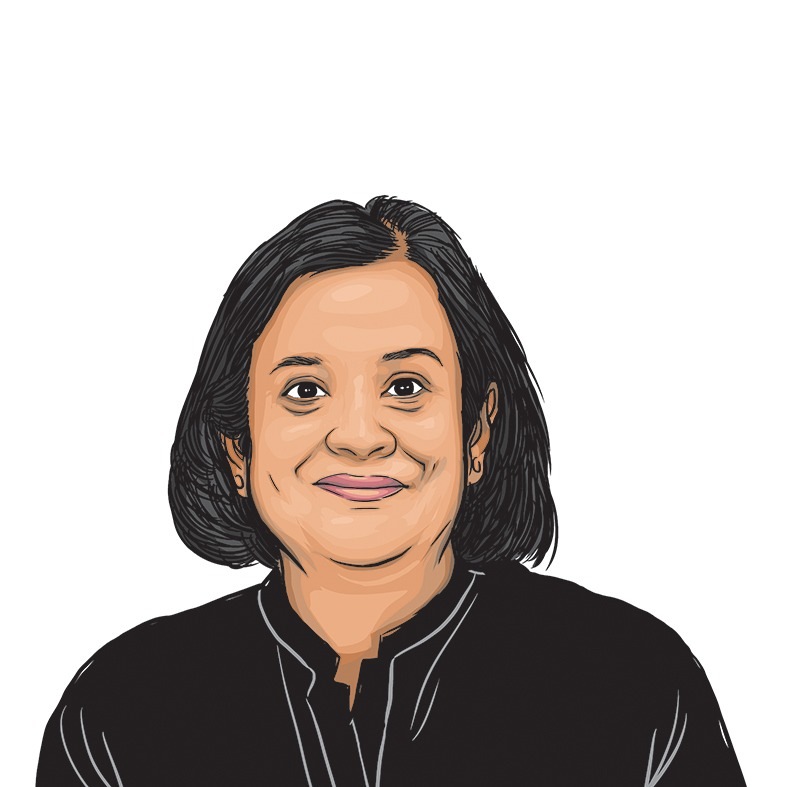Opinion On AI, the big leap India needs
The era of incremental progress is over. With nations competing to dominate the ecosystem, India needs to do more than be a participant
 For India, the era of incremental progress is over. If we are to achieve Viksit Bharat by 2047, we cannot afford to be mere participants in the AI revolution — we must lead its disruption. Our success will depend on three non-negotiable imperatives.
For India, the era of incremental progress is over. If we are to achieve Viksit Bharat by 2047, we cannot afford to be mere participants in the AI revolution — we must lead its disruption. Our success will depend on three non-negotiable imperatives. The past six weeks have shattered conventional wisdom about AI dominance. A new era of innovation, disruption, and geopolitical manoeuvring has arrived. Those who fail to adapt risk being left behind.
January brought a stark wake-up call with the emergence of DeepSeek. The Chinese start-up unveiled its AI model, DeepSeek-R1, which matched the capabilities of leading models like OpenAI’s GPT-4 while also being open source and free. This breakthrough wasn’t just a technological feat, it was a warning shot. The balance of AI power is shifting, proving that true innovation isn’t just about resources but about the speed, efficiency, and strategic intent behind them.
Meanwhile, the AI Action Summit in Paris, where leaders from nearly 100 nations convened to shape AI’s future, sent a resounding message: Growth must take precedence over excessive regulation. A defining moment came when France unveiled a €109 billion AI investment plan, underscoring the urgency of substantial investments to maintain global competitiveness. In a landmark shift, President Emmanuel Macron and the Finnish Minister of Transport and Communications Timo Harakka committed to scaling back regulations in Europe to keep pace with global AI developments.
India’s advocacy for a human-centric AI approach, passionately championed by Prime Minister Narendra Modi, also gained traction. The summit concluded with a commitment to inclusive and sustainable AI, ensuring the technology drives labour market growth while aligning with environmental security and social well-being. As the world accelerates AI-driven innovation and economic expansion, a nation’s ability to disrupt and control the AI supply chain is no longer just a competitive advantage — it will determine who writes the rules of the future.
DeepSeek’s success serves as both a wake-up call for established players and an inspiration for emerging challengers. Kai-Fu Lee, former President of Google China, put it aptly: “The US is great at research and innovation and especially breakthroughs, but China is better at engineering… In this day and age, when you have limited compute power and money, you learn how to build things very efficiently.” This insight underscores the critical role of engineering excellence and R&D prowess in advancing artificial intelligence. Faced with export controls, Chinese AI companies shifted their focus to optimising model architecture, leading to breakthroughs. These include Pure Reinforcement Learning, or enabling AI models to refine themselves through self-play and real-world feedback, a Mixture-of-Experts (MoE) Architecture, or activating only a fraction of parameters per task that dramatically reduces computational costs while enhancing efficiency, Multi-Head Latent Attention or improving data processing by identifying nuanced relationships and handling multiple input aspects simultaneously, and distillation techniques that involve efficiently transferring knowledge from large models to smaller, more adaptable ones.
In addition, China’s pivot from NVIDIA’s proprietary CUDA to PTX isn’t just a workaround — it’s a strategic masterstroke. By breaking free from a locked ecosystem, they are ensuring their AI advancements remain resilient, adaptable, and unshackled from external constraints. This isn’t just about efficiency; it’s about rewriting the rules of AI dominance.
These advancements prove that necessity fuels innovation, and that the new disruptors in the era of AI will be those who master both breakthrough research and cost-effective, scalable engineering.
In the final days of his tenure, former US President Biden issued two pivotal directives aimed at securing US leadership in AI. On January 13, his administration introduced an Interim Final Rule to regulate the export of GPUs, a critical component for AI development. This measure aimed to restrict the transfer of advanced AI-enabling technologies to adversaries while ensuring streamlined exports to allies. The very next day, Biden signed an executive order prioritising clean energy development for AI data centers, directing federal agencies to lease land for infrastructure projects powered by low- or zero-carbon energy sources.
Interestingly, while President Donald Trump swiftly revoked Biden’s AI safety order, these two directives have remained untouched — at least for now. Vice President Vance has since reaffirmed the US’s intent to dominate AI, with a sharp focus on chips, software, and regulatory influence.
The AI race has reached a breaking point. Nations are no longer just competing on innovation — are battling for control. Those who lead will shape the future, while those who lag will find themselves dependent, vulnerable, and left behind in the new AI order.
As the industry and nations adapt to this new paradigm of AI development, the coming months and years will witness intensified competition and rapid advancements. The global AI landscape is no longer just about progress — it’s about who drives the disruption and who gets left behind.
The world is increasingly dividing into two camps: disruptors and disruptees. The pressing question for countries is: Which side will you be on?
India stands at a decisive juncture. Our aspiration to become a developed nation by 2047 —Viksit Bharat — is not merely an ambitious goal but a defining mission that requires a fundamental transformation of our economy and society. This shift hinges on our ability to unlock the full potential of emerging technologies like AI to drive the transformation.
For India, the era of incremental progress is over. If we are to achieve Viksit Bharat by 2047, we cannot afford to be mere participants in the AI revolution — we must lead its disruption. Our success will depend on three non-negotiable imperatives. One, world-class talent to drive AI excellence and global competitiveness. Two, cutting-edge R&D and innovation to ensure India is not just a consumer of AI but a creator of breakthrough technologies. Three, an uncompromising commitment to human-centric AI, ensuring that innovation serves society and strengthens our global standing.
This must be the hallmark of India’s AI leadership — one that is bold, visionary, and unapologetically ambitious. As PM Modi aptly reminded the world at the AI Action Summit, as AI writes the code for humanity, we, humans, must hold the key to shaping its future responsibly.
Subrahmanyam is CEO Niti Aayog and Ghosh is Distinguished Fellow, NITI Aayog




